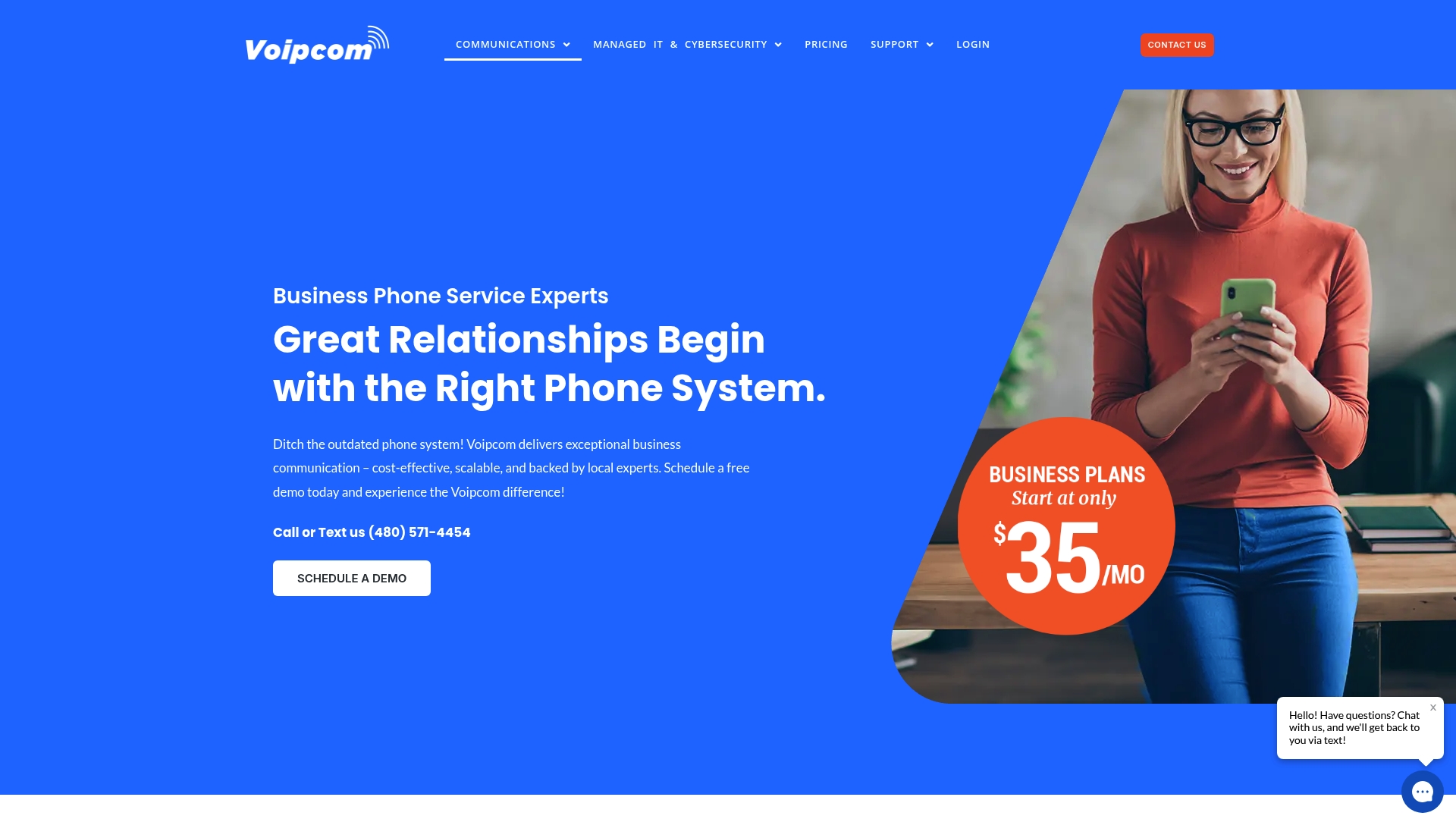Did you know that businesses lose an estimated $75 billion each year in the US alone due to poor customer service? When phones keep ringing and callers face endless holds, customer frustration skyrockets. Call queueing offers a smarter solution that turns overwhelming call volumes into manageable, professional interactions. With the right approach, companies can ease wait times, keep callers informed, and make each customer feel valued, even during the busiest periods.
Key Takeaways
| Point | Details |
|---|---|
| Effective Call Management | Call queueing organizes incoming calls systematically, enhancing customer experience through wait times and callback options. |
| Variety of Queue Types | Businesses can select from multiple queue systems, such as round-robin and skills-based, to optimize call distribution based on their specific needs. |
| VoIP Advantages | VoIP call queues transform customer interactions by implementing intelligent routing and callback technologies, improving overall communication efficiency. |
| Operational Efficiency | Advanced call queuing reduces call abandonment, balances workloads, and enhances first-call resolution, proving essential for modern business communication. |
Table of Contents
- Defining Call Queueing And Core Concepts
- Types Of Call Queueing Systems Explained
- How Call Queueing Works In VoIP Environments
- Benefits And Applications For Modern Businesses
- Costs, Limitations, And Common Pitfalls
Defining Call Queueing and Core Concepts
When your business phone lines start buzzing and no agents are immediately available, call queueing becomes your secret weapon. According to research from Vonage, call queueing is a sophisticated call management feature that places incoming calls into a virtual waiting line when all agents are occupied.
Here’s how call queueing transforms your communication infrastructure:
- Organized Call Routing: Systematically manages incoming calls based on arrival time or custom priority rules
- Enhanced Customer Experience: Provides hold music, estimated wait times, and callback options
- Operational Insights: Gives real-time data about queue length and caller wait duration
Our comprehensive guide on understanding call queues can help you dive deeper into implementation strategies. As research from NFON highlights, advanced call queuing systems offer remarkable features like:
- Custom announcement configurations
- Intelligent call routing criteria
- Agent performance weighting
- Automatic wrap-up time management
- Hold-time notification systems
Basically, call queueing transforms chaotic phone interactions into a streamlined, professional communication experience. By implementing these intelligent routing mechanisms, businesses ensure every caller feels valued – even when wait times are unavoidable.
Types of Call Queueing Systems Explained
Businesses aren’t limited to a one-size-fits-all call queue approach. Our efficient call handling guide reveals multiple sophisticated queuing strategies that can dramatically improve communication workflows.
According to research from Fireberry, call queuing systems primarily operate in three distinct formats:
- Round-Robin Queues: Distributes calls evenly across available agents
- Priority Queues: Route calls based on predefined importance criteria like customer value or urgency
- Skills-Based Queues: Connect callers with agents possessing specific expertise matching the inquiry
Advanced queueing strategies go even deeper. As research from Telecloud highlights, organizations can implement nuanced approaches such as:
- Tiered Round-Robin: Systematically escalate calls through agent skill tiers
- Ring-All Strategy: Alert all available agents simultaneously
- Callback Queues: Allow customers to maintain their place in line while hanging up
- Call-Park Systems: Enable temporary call holding and strategic redirection
These intelligent routing mechanisms transform traditional phone systems from rigid communication channels into dynamic, responsive customer interaction platforms. By selecting the right queue strategy, businesses can significantly enhance caller satisfaction and operational efficiency.
Here’s how the main call queue types compare:
| Queue Type | How Calls Are Routed | Ideal For |
|---|---|---|
| Round-Robin | Evenly among all agents | Balanced workloads |
| Priority | Based on customer importance | VIP customers Urgent cases |
| Skills-Based | To agents with specific skills | Specialized inquiries |
| Tiered Round-Robin | By agent skill levels, escalated | Complex or technical support |
| Ring-All | All agents alerted simultaneously | Fastest possible response |
| Callback | Caller keeps place, gets callback | Reducing wait frustration |
How Call Queueing Works in VoIP Environments
Enhance your call efficiency with modern phone upgrades by understanding how VoIP call queueing transforms communication infrastructure. According to research from VoIP Business, these systems operate like sophisticated digital waiting rooms where incoming calls are strategically managed when agents are unavailable.
In a VoIP environment, call queues function through intelligent routing mechanisms:
- Automated Call Distribution: Systematically route calls to available agents
- Custom Greeting Management: Play pre-recorded messages or hold music
- Intelligent Failover Paths: Create backup routing strategies when primary agents are busy
According to Wikipedia’s research on virtual queuing systems, advanced VoIP call centers now implement remarkable callback technologies. When wait times exceed predefined thresholds, these systems can:
- Offer callers callback options
- Retain caller’s original queue position
- Free up communication circuits
- Reduce caller frustration
- Optimize overall communication efficiency
This technology essentially transforms traditional phone interactions from rigid, linear experiences into dynamic, responsive communication channels. By leveraging VoIP’s flexibility, businesses can create more intelligent, customer-friendly communication strategies that adapt in real-time to fluctuating call volumes and agent availability.
Benefits and Applications for Modern Businesses
Learn how cloud telephony transforms business communication and discover why call queueing has become a game-changer for modern organizations. According to research from Medium, implementing strategic call queues can significantly impact operational efficiency and customer satisfaction.
The key benefits of advanced call queuing systems are profound:
- Reduced Call Abandonment: Minimize lost customer interactions
- Enhanced First-Call Resolution: Route calls to most appropriate agents
- Improved Customer Experience: Provide transparent wait time estimates
- Balanced Workload Distribution: Prevent agent burnout
According to Vonage’s comprehensive research, optimized call queues deliver multiple strategic advantages:
- Streamline overall communication workflows
- Decrease operational costs
- Increase staff productivity
- Provide real-time performance insights
- Create more predictable customer service environments
The impact extends beyond mere technical optimization. By implementing intelligent call queueing, businesses transform their communication infrastructure from a potential bottleneck into a strategic asset. Modern organizations can now convert what was once a frustrating waiting experience into an opportunity for proactive, responsive customer engagement.
Costs, Limitations, and Common Pitfalls
Discover how mobile apps can enhance your VoIP communication strategy while understanding the potential challenges of call queueing. Despite its numerous advantages, implementing call queues isn’t without potential complications.
According to research from CallWave, customer perception remains a critical factor:
- Wait Time Perception: Even organized queues can feel frustrating to customers
- Continuous Monitoring: Requires active analytics and performance tracking
- Potential Customer Dissatisfaction: Long queues can erode brand loyalty
- Complex Implementation: Demands sophisticated configuration
Research from TeleCloud highlights several critical potential pitfalls businesses must navigate:
- Over-reliance on ring-all strategies causing agent burnout
- Mismatched queue types for specific business needs
- Insufficient queue segmentation
- Lack of intelligent routing mechanisms
- Inadequate performance measurement
Successful call queue implementation isn’t about technology alone—it’s about creating a balanced, human-centric communication strategy. By understanding these limitations, businesses can design more empathetic, efficient queuing systems that prioritize both operational efficiency and customer experience.
Ready to Eliminate Call Chaos and Transform Customer Engagement?
If you are tired of losing valuable customer conversations to missed calls, overwhelmed staff, or confusing phone queues, there is a smarter way forward. The strategies and technologies discussed in our Complete Guide to Call Queueing show how structured queueing and intelligent VoIP can reduce wait times, boost customer satisfaction, and make your team more productive. At Voipcom, we bring these solutions to life with fully managed, scalable systems designed to replace outdated, stressful phone setups.
Stop letting call bottlenecks damage your reputation or bottom line. Take action today and discover how our cloud telephony solutions and efficient call handling features can turn every call into an opportunity to impress. Visit Voipcom or reach out for a personalized demo and see exactly how effortless modern business communication can be.
Frequently Asked Questions
What is call queueing and how does it work?
Call queueing is a call management feature that places incoming calls into a virtual waiting line when all agents are occupied. It systematically manages incoming calls, offers hold music and estimated wait times, and gives real-time data about queue length and wait duration.
What are the main types of call queueing systems?
The main types of call queueing systems include Round-Robin Queues, which distribute calls evenly across agents; Priority Queues, which route calls based on predefined importance; and Skills-Based Queues, which connect callers to agents with specific expertise relevant to their inquiry.
What are the benefits of using call queueing for businesses?
Implementing call queueing can reduce call abandonment, enhance first-call resolution, and improve customer experience. It also balances agent workloads, streamlines communication workflows, and increases overall staff productivity.
What are some common challenges associated with call queueing?
Some challenges include the perception of wait times leading to customer frustration, the need for continuous monitoring of performance, and the complexity of implementing the right queue types for specific business needs. It can also lead to agent burnout if not managed properly.




